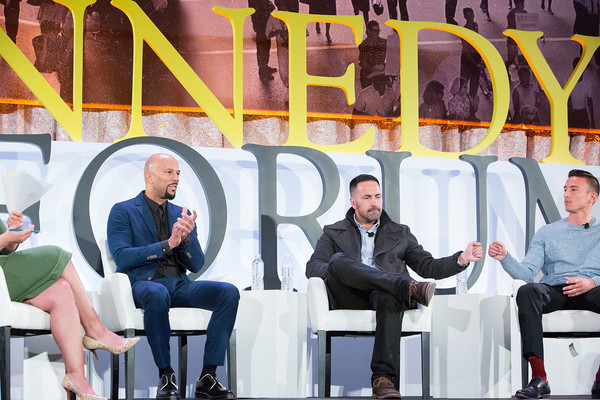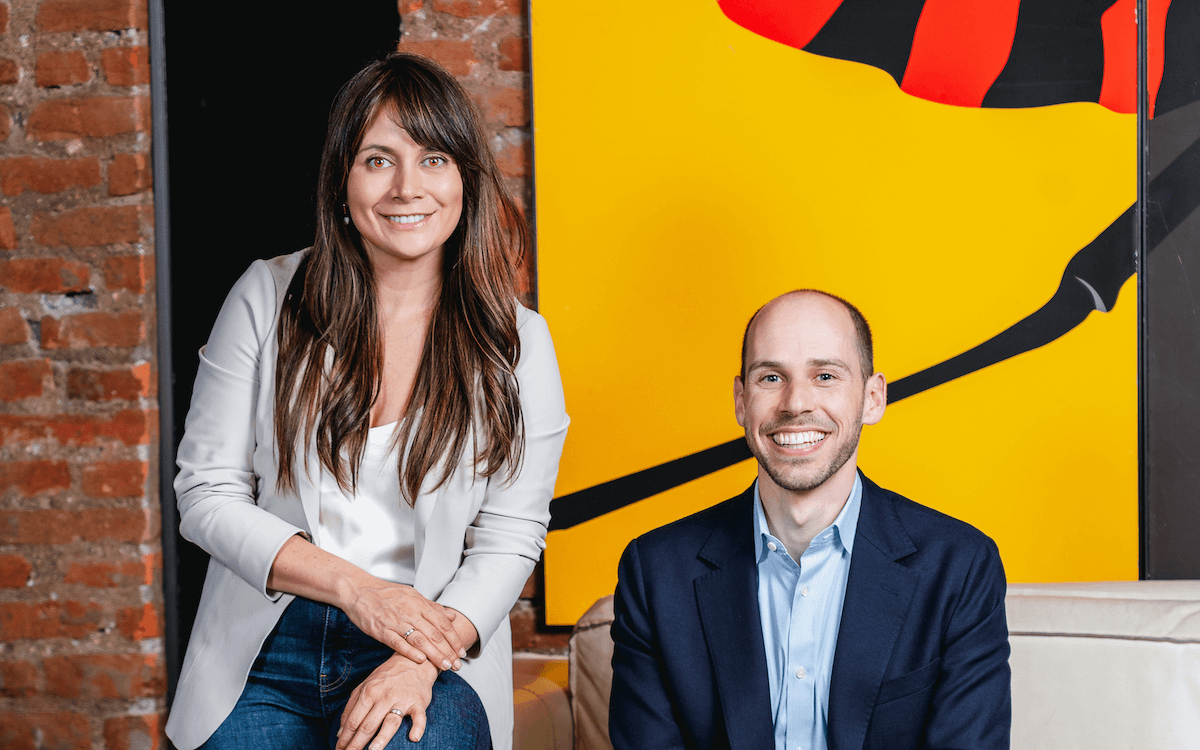ImpactAlpha, Feb. 3 – Filling theaters for the new justice and redemption movie Just Mercy isn’t the end game for executive producer Scott Budnick. “It’s where we start,” he says.
The true story of lawyer and activist Bryan Stevenson, who has helped hundreds of wrongfully convicted death row inmates gain their freedom, Just Mercy stars Michael B. Jordan, Jamie Foxx and Brie Larson and has earned more than $30 million at the box office.
Budnick, the producer of blockbuster comedies such as Hangover, is an executive producer and co-financed the film through One Community, his new financing vehicle for a slate of upcoming film and TV productions with social impact messages.
One Community partnered with Good Films Impact to support a $10 million campaign, Represent Justice, to spur reform in the U.S. criminal justice system and dignity for individuals directly impacted by it, who are disproportionately people of color.
“We do not want to make the take your medicine, eat your vegetables films,” Budnick told ImpactAlpha. “We want to make commercial films that draw people in, get wide audiences, win awards and can move a lot of people.”
The entertainment business is increasingly using its influence and social credibility for social justice. At the heart of a new deal between Jay-Z’s artist and athlete management company Roc Nation and the N.F.L. are efforts to push forward a national conversation on justice reform, including through a public service announcement at yesterday’s Super Bowl.
One Community puts money behind films with big social messages – but also big stars, big studios and big marketing budgets to put the story in front of as many people as possible. Budnick pairs the financing with seven-figure, philanthropically raised “social impact” campaigns managed by the nonprofit Good Films Impact to raise funding for community organizations, shift culture and change policy. The slate approach reduces risk in the hit-and-miss movie business.
The bet: Cultural change, made possible by popular film, can ease political change.
Impact investors and philanthropists increasingly are keen to expand from documentaries into commercial film. High-profile film as agent of change represents an attractive investment opportunity for investors seeking to address systemic issues from inequality and climate to immigration and food.
“Media shapes what we view as possible,” says Candide Group’s Morgan Simon, an impact investor focused on social justice.
Slate economics
Just Mercy may have been snubbed by the Academy but Budnick and One Community are just getting going.
When producers do strike box-office gold, movies can become totem pole assets on which major media franchises can be built. Film also is a siren call that has attracted – and bankrupted – titans and moguls for more than a century.
That’s why Budnick isn’t betting on a single home run. One Community will let him build out a slate of films. The approach marries a portfolio theory of diversified risk-reduction to a social-change strategy of long-term impact.
And Budnick’s portfolio theory is data driven. Using a specialized database, Budnick was able to run performance scenarios on groups, or what are known in the entertainment business as slates, of past social-oriented films like Moonlight and 12 Years a Slave. The discovery: The returns can be attractive.
Budnick and One Community have raised $50 million to finance the slate of films. Budnick aims to raise another $100 million and invest in roughly six films a year.
Next up: One Community has signed on to finance the development of King Leopold’s Ghost, the story of large-scale atrocities committed by Belgium in the Congo and the Congolese-led human rights campaign that found back. Ben Affleck will direct the film; Martin Scorsese is producing.
Impact media
One Community is among an emerging set of structures for financing pop culture with a mission. The ecosystem of social change media has built many more networks and pathways in the decade since billionaire Jeff Skoll pushed social impact movie-making through Participant Media (Spotlight, An Inconvenient Truth). But Participant continues to be at the center of the web, including providing co-financing for Just Mercy.
Also co-financing Just Mercy was a new backer, production company Macro. Former talent agent Charles King founded Macro in 2015 to inject diverse voices into TV and filmmaking through productions written, directed, produced and starring people of color. The company raised a $150 million content fund from backers including Emerson Collective, Kellogg Foundation, Ford Foundation and Libra Foundation. It’s portfolio includes produced Oscar-nominated film Fences and Netflix’s Mudbound.
Budnick is One Community’s CEO. Much of the rest of the firm’s leadership are women, and women of color in particular, including Robin Bryn Hilman (chief operating officer), Sonya Lockett (chief impact officer), Adriana Ambriz (vice president of content), Lauren de Normandie (creative executive) and Misha Schwarz (creative executive).
Budnick has tapped Stanford bias researcher Jennifer Eberhardt to test the impact of Just Mercy and its impact campaign. “I think we’re going to have some really concrete evidence that empathetic storytelling can literally rewire someone’s brain,” says Budnick.
Budnick initially struggled to get financial buy-in from the philanthropy world, which has a long tradition of funding impact media. “All of them would use the term narrative change and culture change,” says Budnick. “But if any of them were funding anything it was small documentary films that were incredibly powerful and incredibly well made, but had little to no marketing support or distribution.”
Endeavor Content, the new film and TV finance arm of talent agency giant William Morris Endeavor, was first into One Community with a $25 million commitment (Endeavor also co-financed Just Mercy). That opened the door for a high-profile network of entertainment and finance investors to come on board, including Barry Sternlicht of Starwood Capital, Live Nation Entertainment CEO Michael Rapino, Variety owner Dan Loeb, Philadelphia 76ers owner Michael Rubin and Kimberly Steward’s K Period Media.
Budnick’s breakthrough with philanthropic investors came after a conversation with Ford Foundation president Darren Walker. “Darren was excited about the opportunity,” says Ford’s Christine Looney, who helped structure Ford’s commitment to One Community as a $5 million program-related investment. The foundation’s Just Films program had for years sought change through documentary film and other media projects. “Darren saw the potential to continue to advance social justice storytelling under the One Community model.”
Value of proximity
Budnick is an example of what Bryan Stevenson calls “the power of proximity.” Stevenson is the real-life lawyer and human rights champion whose story is told Just Mercy. Stevenson and the Equal Justice Initiative he founded have helped secure the release of more than 145 wrongfully convicted death row inmates.
“When you get proximate to the excluded and the disfavored, you learn things that you need to understand if we’re going to change the world,” Stevenson said in a Bates University commencement speech.
Budnick has for years advocated for criminal justice reform through the Anti Recidivism Coalition. While still filming Hangover sequels, Budnick saw injustice up close in a juvenile hall, where he met David, a 15-year-old kid with a 300 years-to-life sentence for standing next to the person that shot a gun that barely injured someone.
That makes Just Mercy and the Represent Justice campaign an appropriate early effort for One Community.
“Something for impact investors to think about is the importance of supporting both progressive media production and also the organizing work that can thrive alongside it,” Candide Group’s Simon says.
Other filmmakers and activists have mounted “impact campaigns” to coincide with films but often with smaller, six-figure budgets. At $10 million, Budnick’s “Represent Justice” campaign is putting significant money behind the effort. To really shift culture, he says “it needs to be longer and deeper and more intentional.”
Already, the campaign has screened the film for more than 20 NBA basketball teams and 10 governors. Good Films Impact has orchestrated theatre buyouts to screen the film for community groups and organized a handful of “play for justice” events, where influencers like Just Mercy’s Michael B. Jordan or NBA teams like the Milwaukee Bucks go inside prisons to talk with inmates and play a game of basketball.
The campaign will run a year and a half, giving it time to plan with experts and community groups, while still having a long enough runway to execute before, during and after the film’s release.
Investor ecosystem
“Investing in media for impact has always been bigger than investing in social issue documentary film,” says Laura Callanan of Upstart Co-Lab, which has documented the history, opportunity and investment ecosystem of social impact media in a deep dive. “We have seen since the beginning of the medium how popular, entertaining film and TV can contribute to a shift in norms and, eventually, in laws.”
The new crop of social impact media funders includes athletes and celebrities, family offices and the new breed of quasi-philanthropic LLCs, like Laurene Powell Job’s Emerson Collective or Pierre Omidyar’s First Look Media. Impact-media investments funds include Richelieu Dennis’s Essence Ventures, New Media Ventures and the Pop Culture Collaborative.
Investment advisor Candide Group directs more than $30 million annually into private investments dedicated to social justice. Candide Group made a foray into impact-oriented film by supporting an investment in Macro. Candide Group’s focus on structural change across issues, sectors, geographies means it looks to affect cultural change writ large, says Simon, who is also personally invested in Macro. “It’s not just about having one more production that portrays people of color in a positive light. It’s about having many many productions” that create an engine of social change.
Says Simon, “For too long, there has been a completely inadequate representation of women and people of color in media in a way that matches our current reality.”
Foundations are playing a familiar role of cultural curators. The Ford Foundation, with a long history of funding artist-driven documentary and emerging media projects, is excited about potential impact of commercial film. The foundation backed both One Community and Macro with program-related investments.
“There is emerging potential to use film for narrative change and to continue to diversify the entertainment industry with new voices and faces,” says Ford’s Christine Looney.
Mass media is a growing focus of the racial equity strategy at the Kellogg Foundation. “What we’ve seen is only a few stories being told or a few perspectives,” says Kellogg Foundation’s Cynthia Muller. Kellogg is also invested in Macro and building out a pipeline of media investments.
“What we’re trying to do is inundate the market and the conversations with other stories that help to contextualize the complexity of our society, and how each one of us interacts with it.” Muller says she wants to create “more conversations that actually result in deeper insights and people actually being able to act on them.”
Risk and return
Like in the film industry, slate financing has gained traction in the world of gaming. E-line, an independent “social impact” video game producer, is expected to launch the Impact Slate Game Fund next year to help diversify the risks of backing a single title.
To model what a slate of “social justice” films financed by One Community could return to investors, Budnick turned to Hollywood dealmaker Roy Salter, who serves as One Community’s non-executive chairman of the board and investment committee. Salter, with FTI Consulting, maintains a database of every film made over the last 20 years, what each cost to make and what they grossed at the box office.
Salter says he’s seen an uptick in the number of films with “social-impact” characteristics. Where social-impact films have historically been heavy-heart dramatic films like Beale Street and Selma, he told ImpactAlpha in an email, “the advent of films such as Wonder Woman, The Upside, Judy, A Beautiful Day in the Neighborhood, Rocketman, Long Shot, Captain Marvel, Joker and many others widen the mechanisms by which the entertainment-community conveys messages that are socially-impactful throughout the world.”
As socially-impact entertainment has grown, says Salter, “so too have sources of capital widened given that many of these features are highly commercial and profitable.”
With Salter’s database, Budnick tagged out more than 1,000 films that would qualify as the type of social-justice films One Community might target for investment. Salter then ran a thousand simulations of six-film slates randomly selected from this dataset. The results produced proxy-forecasts of hypothetically similar films that may be produced and released over a 10 or more year period. The projected return on investment is attractive, says Budnick.
“It’s not like it’s going to be your Uber, Twitter, Instagram investment if that’s what you’re looking for,” says Budnick. “But if you’re looking to make a decent return and make a ton of impact, this is for you.”












